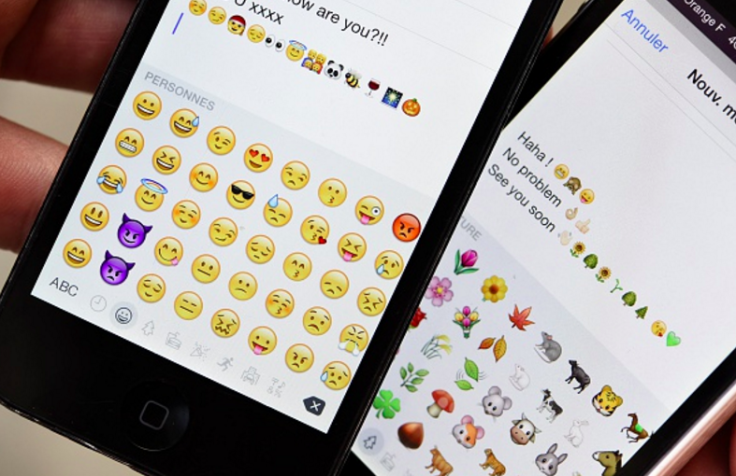Twitter Inc (TWTR) Emoji Study Gives A 'Praise Hands' To Oxford Dictionary And Millennials

Time to dial back the outcry over Oxford Dictionaries’ choice for “Word of the Year.” Twitter released a study that found the “Face With Tears of Joy” emoji -- the "word" that got the honor -- was in fact the most popular emoji used on the microblogging site.
That emoji was used in 24 percent of tweets that included emoji and were related to a television program. The laughing face was followed by the heart eyes, at 12 percent, crying face (8 percent) and prayer hands (6 percent).
The most popular emoji is “typically used to convey laughter, but it doesn’t just see prominent usage in tweets about comedy programming: it’s the top emoji across all genres, as well as all times of day,” Twitter’s senior data specialist Joe Cruse wrote in a blog post.
Twitter users frequently use emoji during all TV-related conversation on the platform. In July, about 14 percent of tweets related to television included at least one emoji. That number is up from 9.8 percent in April 2014, which is when emoji were first available on Twitter. Shows around music garnered the most tweets with emoji, followed by drama, reality and family shows.
Since television, especially live events, is a focus of the social network, it launched a new mode of discovery and updated pages for TV shows in September, when season premieres happen.
“Fall premieres, which take place this week, are a big event for TV fans on Twitter. Fans are already expressing their excitement and have sent 21 million Tweets in advance of the debuts, up 34 percent from 2014,” a Twitter representative wrote in an email at the time.
The Millennials, The Brands
Not surprisingly, the Twitter users who send the most emoji skew younger. About 86 percent of emoji users are ages 24 or younger, with about 50 percent in the 18-24 demo. The gender of emoji fans skews female, with 57 percent of females using at least one emoji in their TV-related tweets, vs. 43 percent of males.
Twitter also highlighted more shows and brands using emoji on the site. For instance, the shows’ Twitter accounts sometimes replace words with emoji.
RT to wave your _in the air with us. #VoicePremiere
— The Voice (@NBCTheVoice) September 22, 2015Brands have deeply invested into emoji due to the positive feedback they have seen. Mountain Dew's digital brand manager Christine Ngo told International Business Times in July that including emojis in one-to-one messaging drew more engagement, according to the company's social network data insights. "As a result, we've integrated emojis into Mountain Dew's overarching social strategy," Ngo said.
But emoji aren't just for fun -- Twitter is also starting to monetize them, experimenting with paid ad emoji. In September, Twitter created an emoji of two glass bottles clinking for Coca-Cola that appeared with the tweet #ShareACoke.
© Copyright IBTimes 2024. All rights reserved.






















